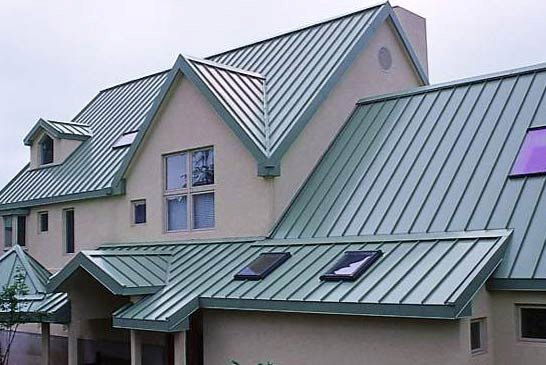How to Know the Best Time to Replace Your Roof
To help develop this article click 'Edit this article' above.
Contents |
[edit] Introduction
The roof of your home is an essential part of your weather protection and your energy efficiency. Due to the fact that it’s often exposed to extreme temperature swings and various weather occurrences, you will have to learn about its maintenance. Here, you have two options – repair and replacement. Due to the fact that the former is immediate, less costly and something that you may be able to do on your own, it’s usually the go-to choice (when possible). Sometimes, however, it’s best to simply repair your entire roof.
Here are several signs to help you recognize the latter scenario.
[edit] The age of the roof
The older your roof gets, the more susceptible to damage it will become. A typical roof lasts between 20 and 25 years (depending on its construction and materials), which gives you a time marker to look out for.
A roof replacement is a major investment. Therefore, it’s only cost-efficient to do it properly, so that you don’t have to repair or replace the roof as often. For instance, if you were to see damage in your roof about 5 years after you’ve installed it, a repair would be the right move. On the other hand, the damage that occurs 18, 20 or 25 years after the installation might be an indicator that a replacement is in order.
[edit] Warning signs that you need a new roof
There are some signs that may indicate your roof to be in a poor state. For instance, your roof plays a crucial part in the home’s energy efficiency, which is why your utility bill might start going up. If daylight seeps into your home or there’s a leak due to missing shingles or tiles in several places. Also, if a lot of your shingles have cracks or curled edges, it might be the time to work on this.
It’s usually worth your while to consult experts and ask for their opinion on the state of the roof.
[edit] Figuring out the best time to install
The time of the year that you choose for the installation is also quite important, as it might affect working conditions. For instance, during winter a DIY repair can be quite dangerous due to the fact that the roof could be slippery. Also, new shingles need to go under thermal sealing which may be more complex. However, it may be easier to find professionals, as their schedule may be more free than usual.
During the summer, however, is when the majority of this work takes place, as conditions are generally more favourable.
[edit] Defects
Finally, you need to understand the fact that a bad repair and bad installation usually lead to more problems, even if they do solve some of the initial issues. So you might want to avoid DIY repairs, and check the reputation of the agency that you’re hiring to perform the works.
[edit] Conclusion
In the end, you need to bear in mind that a replacement is always more efficient than the repair. However, it’s more expensive, takes more time and may make you vacate your home during the works. However, over the course of time, the ROI of such a project may be a positive one.
[edit] Related articles on Designing Buildings Wiki
Featured articles and news
Retrofit 25 – What's Stopping Us?
Exhibition Opens at The Building Centre.
Types of work to existing buildings
A simple circular economy wiki breakdown with further links.
A threat to the creativity that makes London special.
How can digital twins boost profitability within construction?
The smart construction dashboard, as-built data and site changes forming an accurate digital twin.
Unlocking surplus public defence land and more to speed up the delivery of housing.
The Planning and Infrastructure Bill
An outline of the bill with a mix of reactions on potential impacts from IHBC, CIEEM, CIC, ACE and EIC.
Farnborough College Unveils its Half-house for Sustainable Construction Training.
Spring Statement 2025 with reactions from industry
Confirming previously announced funding, and welfare changes amid adjusted growth forecast.
Scottish Government responds to Grenfell report
As fund for unsafe cladding assessments is launched.
CLC and BSR process map for HRB approvals
One of the initial outputs of their weekly BSR meetings.
Architects Academy at an insulation manufacturing facility
Programme of technical engagement for aspiring designers.
Building Safety Levy technical consultation response
Details of the planned levy now due in 2026.
Great British Energy install solar on school and NHS sites
200 schools and 200 NHS sites to get solar systems, as first project of the newly formed government initiative.
600 million for 60,000 more skilled construction workers
Announced by Treasury ahead of the Spring Statement.
The restoration of the novelist’s birthplace in Eastwood.
Life Critical Fire Safety External Wall System LCFS EWS
Breaking down what is meant by this now often used term.
PAC report on the Remediation of Dangerous Cladding
Recommendations on workforce, transparency, support, insurance, funding, fraud and mismanagement.
New towns, expanded settlements and housing delivery
Modular inquiry asks if new towns and expanded settlements are an effective means of delivering housing.

























